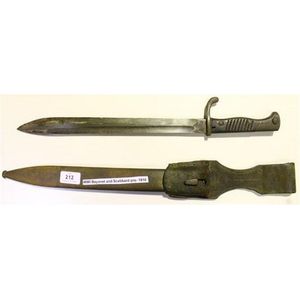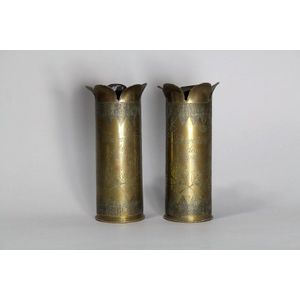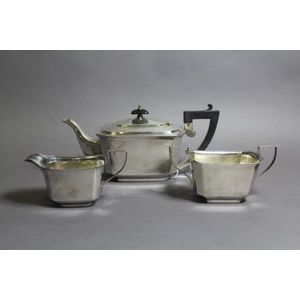Regency Japan Pattern Jugs, Riley & Mason's Style
You must be a subscriber, and be logged in to view price and dealer details.
Subscribe Now to view actual auction price for this item
When you subscribe, you have the option of setting the currency in which to display prices to $Au, $US, $NZ or Stg.
- Manner of .... / Style of ..... - A cataloguing term where the item, in the opinion of the cataloguer is a work in the style of the artist, craftsman or designer, possibly of a later period.
- Circa - A Latin term meaning 'about', often used in the antique trade to give an approximate date for the piece, usually considered to be five years on either side of the circa year. Thus, circa 1900 means the piece was made about 1900, probably between 1895 and 1905. The expression is sometimes abbreviated to c.1900.
- Regency Period - The Regency period in English furniture design refers to the period when King George III, was declared unfit to rule in 1811, and his son ruled as proxy as Prince Regent, until 1820, and then, after the death of his father as George IV until his death in 1830. The Regency period was preceded by the Georgian period (George I, George II, and George III: 1714 - 1811), and was followed by the William IV period, which only lasted until 1837 when William IV died as was succeeded by Queen Victoria.
- Ironstone China - Credit for the invention of ironstone china is generally accorded to Charles Mason in 1813. Charles Mason was one of the two sons of Miles Mason who founded the Mason works in 1802, and ran the business with his brother George Mason.
Ironstone was a heavy hard earthenware which was slightly translucent, its strength supposedly coming from a very small quantity of iron slag added to the mixture. The additional strength enabled the company to make larger objects that were not susceptible to breakage.
The company manufactured dinner wares, toilet sets, tureens, jugs and so on, and the most popular patterns were blue and white, floral and Oriental Imari style colours.
The trade name "Patent Ironstone China" was registered by the company in 1813, but the patent was only valid for 14 years and was not renewed, enabling other potteries to use the word "ironstone" in describing their wares.
Mason wares are generally well marked with "Mason's Patent Ironstone China" .
This item has been included into following indexes:
Visually similar items

Len Castle, green glazed earthenware shallow dish, with torn decoration to the well, impressed initials, diameter 30 cm

A rare World War I bayonet pre-1916 blade 36 cm

Pair of World War I / World War I trench ant vases mode from World War I brass shell cases. Engraved with oak leaves and acorns and 'Souvenir du Front'.

Art deco silver plate three piece tea set, marked Hardy Bros England, 13 cm high and smaller
